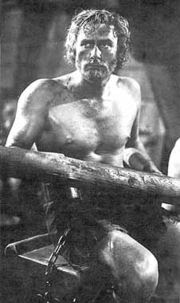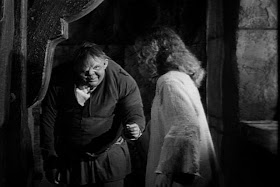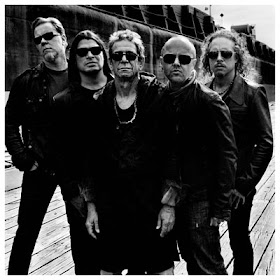 |
| Erroll Flynn rows the boat in The Sea Hawk. © 1940 Warner Bros. Pictures |
Giuseppe Verdi was one of the most prolific and influential composers of Italian opera in the 19th century. In the course of a long career, he made advances in drama and orchestration that changed his chosen art form forever.
Verdi called the period from 1842 (the premiere of Nabucco) to 1851 (the premiere of Rigoletto) his 'galley years'. In that period, the composer cranked out fourteen operas. He had to satisfy a hungry public, a wide range of singers, and the capricious, difficult censors who tried to force the composer from Busetto to radically alter his work.
Here's the top five operas from Verdi's galley years. Chronological order.
1842: Nabucco (premiered Teatro alla Scala, Milan)
Verdi's third opera (and first real success) retold the story of Babylonian Captivity as a blood-and-thunder story. The plight of the captured Jews resonated with the Italian people, and the chorus "Va, pensiero" became a de facto anthem of Italian nationalism. Nabucodonosor became a beloved opera, affectionately known by its diminuitive.
- For more about Nabucco, read the Metropolitan Opera Preview page for the opera.
Early Verdi operas feature a lot of bandits, from the philosophical robbers of I Masnadieri ("The Bandits") to the romantic pirate of Il Corsaro. The most famous is Ernani, created by Victor Hugo and so honorable that he commits suicide rather than marry the leading lady in the last act. But it is also a great opera with a firebrand tenor part that points the way towards the great things to come in Verdi's mature period. Without Ernani, there would be no Trovatore.
- For more about Ernani, read the Metropolitan Opera Preview page for the opera.
1846 Attila (premiered La Fenice, Venice)
One of the few Italian operas with a bass lead, Attila is known for the swaggering sex appeal of its title character. The barbarian invader is presented as a sympathetic anti-hero brought down by the treachery of a rapidly falling Roman Empire. The line "Take all the world, but leave Italy for me" (actually sung by a Roman general negotiating for his life) became a battle cry as Italy moved toward unification and independence.
- For more about Attila, read our review of the Met's 2010 production.
Verdi's version of the "Scottish play" is always known by its English title. That oddity aside, this is a straight-up adaptation of the tragedy of an ambitious Scottish laird who embarks on a murderous march to the throne. Macbeth's leading Lady is one of the composer's most memorable creations: bloody-minded at the start of the opera she is ultimately destroyed by her own harrowing guilt. "Va, il tico maladetto!"
- For more about Macbeth, read the Metropolitan Opera Preview page for the opera.
Most Verdi scholars put this story of a hunchbacked jester at the start of the composer's 'mature' period. It could be argued that Rigoletto is transitional, owing much to the operas that came before. The opening features an onstage banda (small orchestra), playing the lilting rhythm that was an early Verdi trademark. The innovative storm scene (with its humming chorus) and the dark climax owe something to I Masnadieri and Macbeth. Rigoletto sums up and ends Verdi's early period, and is the first peak of his genius.
- For more about Rigoletto, read our Recommended Recordings guide.























